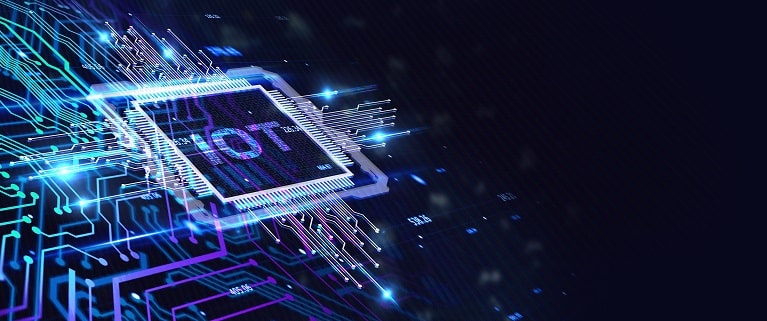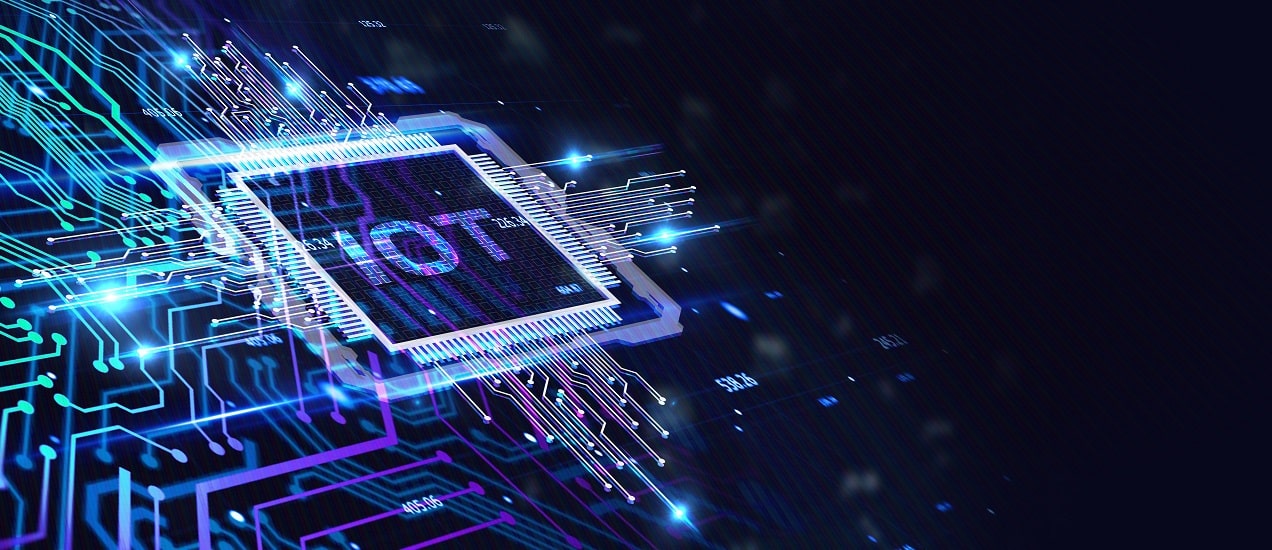The Internet of Things (IoT) has experienced an exceptional surge in its expansion over the past few years. To fully unlock the possibilities and realize the full potential of IoT devices, it will be crucial to make investments in emerging technologies. The convergence of IoT with other cutting-edge technologies, including the Metaverse, Blockchain, Industry 4.0, Edge computing, Artificial Intelligence, and others, will revolutionize the operations of businesses, industries, manufacturing, and economics. This convergence will reshape the conventional norms, opening up new avenues for possibilities and opportunities across multiple sectors.
Several businesses have already started investing in these technologies. According to a Fortune Business Insights report, the IoT market is predicted to grow at a 25.4 per cent CAGR rate, zooming in from $381 billion in 2021 to a mammoth $1.8 trillion in 2028[1].
In this article, let’s look at the latest IoT trends from a Testing perspective.
1. Digital Twin
The concept of a digital twin revolves around the creation of a digital representation that mirrors a physical asset or device in the digital domain. This virtual counterpart provides crucial insights into the structure, context, and behavior of the asset. Engineers widely recognize the digital twin as an indispensable tool, as it enables them to comprehend product performance and make predictions about its future behavior through simulated environments. The digital twin helps them gain valuable understanding of the current performance of products. They can anticipate how these products will perform in the future, thereby enhancing their overall comprehension of these assets.
The Digital Twin assumes a crucial role in testing the Internet of Things (IoT) ecosystem through the simulation of devices. This enables engineers to gain insights into the system's performance in diverse real-world scenarios. Moreover, the Digital Twin provides comprehensive information about the historical and current state and conditions, while also offering the ability to anticipate future outcomes.
As per the Markets and Markets report, the global digital twin market size was valued to be at USD (United State Dollars) 3.1 billion in 2020. It has been projected to reach USD 48.2 billion by 2026, to be growing at a CAGR of 58.0% during the forecast period [2]. As per the Gartner Research report, the digital twin market will bridge this gap in 2026, reaching $183 billion in revenue by 2031, with composite digital twins presenting the largest opportunity [3].
2. Digital Thread
Digital thread and digital twin are closely linked concepts that aim to provide customer-centric experiences in the digital realm. Together, they revolutionize the processes of product engineering, manufacturing, and servicing by establishing a closed loop between the physical and digital worlds. The digital thread can be described as a network of interconnected records that capture data and activities related to a product, or sometimes a process. This integrated approach transforms traditional methodologies and enables seamless collaboration and information flow throughout the product lifecycle.
Conventional simulations or digital mock-ups (DMUs) face significant limitations when it comes to managing modern Internet of Things (IoT) products, including connected and autonomous vehicles. These sophisticated systems involve intricate technologies such as smart sensors, embedded systems, real-time and pervasive connectivity, and data communication with cloud-based systems. Such complex and advanced technologies interact with these IoT systems, surpassing the capabilities of traditional simulations or digital mock-ups (DMUs).
In 2019, the global Digital Thread market size was US$ 222.7 million. It is expected to reach US$ 3485.8 million by the end of 2026, with a CAGR of 47.6% during 2021-to 2026 [4].
3. Metaverse and IoT
The metaverse represents a collective virtual environment accessible through the Internet, providing users with a simulated digital realm that incorporates augmented reality (AR), virtual reality (VR), Internet of Things (IoT), blockchain, and social media concepts. These elements combine to create immersive spaces where users can engage in rich interactions that closely mimic real-world experiences.
The Internet of Things (IoT) has the potential to assume a critical function in the network infrastructure of the Metaverse, serving as a crucial facilitator. Through its sensing capabilities, IoT can offer users a seamlessly integrated and enduring interactive experience that connects the Metaverse with the physical world. However, certain complex test scenarios require greater attention to ensure the validation of data explosion generated by sensors and actuators, the performance evaluation of these devices, and the synchronization between the Metaverse and real-world data collected by IoT devices and sensors.
By 2026, 25% people will spend at least an hour per day in the metaverse for work, shopping, education, social, and/or entertainment, according to Gartner, Inc [5].
4. Blockchain and IoT
Blockchain technology, a decentralized ledger system, has gained considerable recognition beyond its affiliation with cryptocurrencies. When integrated with the Internet of Things (IoT), blockchain exhibits vast potential in creating a services marketplace among devices and empowering companies to extract value from accumulated data. The growing presence of new blockchain protocols, partnerships, and IoT device providers indicates a robust compatibility between blockchain and the IoT industry, setting the stage for exciting advancements.
CoT (Chain of Things) represents a collaborative alliance comprising technologists and prominent blockchain companies. The consortium has successfully developed use cases such as Chain of Security, Chain of Solar, and Chain of Shipping. The current utilization of blockchain protocols in these applications faces notable challenges in terms of time delays and energy efficiency, impeding their optimal implementation in IoT platforms. However, it is essential to recognize and conduct thorough testing on the processing power and storage capacities of IoT devices to guarantee adherence to the imposed constraints. By conducting comprehensive IoT testing, it becomes possible to ensure that the limitations of IoT devices are adequately accounted for and met.
The Blockchain IoT market is predicted to register a CAGR of 40% over the forecast period, 2021 – 2026 [6].
5. Industry 4.0
Industry 4.0, a term coined in Germany, represents the latest revolution in the manufacturing industry. It is characterized by the widespread application of Internet of Things (IoT) technologies in industrial settings, also known as the Industrial Internet of Things (IoT). This transformative shift is further supported by the implementation of Cyber-Physical Production Systems (CPPS). IoT technologies play a central role in developing, producing, and managing the entire logistics chain through smart factory automation, marking a significant transition in manufacturing practices. Embracing Industry 4.0 requires enterprises to adopt agile, intelligent, and innovative approaches to advance production processes by integrating technologies that complement human labour with robotics, aiming to reduce industrial accidents resulting from process failures.
In testing, it is crucial to achieve alignment and collaboration between IT (Information Technology), OT (Operational Technology), and ET (Engineering Technology) teams. In the context of Industry 4.0, integrating IT with OT and ET can present challenges due to the significant technology gap between them. While IT is well-established with clear policies, OT and ET are emerging trends and have not traditionally operated as networked technologies. As a result, aligning manufacturing processes with IT systems can often be a complex task. Bridging this gap requires effective communication, coordination, and synchronization among the teams to ensure seamless integration and successful testing in Industry 4.0 environments.
According to the newest market research study published by Facts and Factors, the demand analysis of Global Industry 4.0 market size and share revenue was valued at approximately USD 84.59 billion in 2020. It is expected to reach around USD 334.18 billion by 2028, to be growing at a CAGR of 19.4% during the forecast period from 2021 to 2028 [7].
6. Edge Computing
The continuous transmission and reception of a vast volume of data among network-connected smart devices necessitate efficient processing and analysis. In the realm of edge computing, a strategic approach is employed where data is collected and utilized, allowing for the gathering and processing of IoT data at the edge of the network. This eliminates the need to transmit the data back to a central data centre or cloud environment.
In the IoT ecosystem, edge devices play a crucial role as they enable coordination and real-time analysis at the network's edge. However, the performance of edge devices can be influenced by various limitations, including network bandwidth, device capabilities, and reliability. Testing edge devices encompasses a range of vital aspects, such as evaluating network functionality, assessing bandwidth capacity, measuring processor efficiency, ensuring platform compatibility, validating analytics accuracy, testing security resilience, and verifying protocol adherence. Thorough testing of these elements is essential to guarantee the smooth operation and reliability of edge devices within the IoT network. This, in turn, facilitates efficient data processing and communication at the network's edge.
In the report, entitled “Predicts 2022: The Distributed Enterprise Drives Computing to the Edge” [8].
7. Artificial Intelligence and IoT
The exponential growth of IoT devices generates an immense volume of data that can be challenging to collect, process, and analyze effectively. However, the integration of Artificial Intelligence (AI) with IoT systems empowers the creation of intelligent machines capable of simulating smart behavior and facilitating decision-making with minimal human intervention. AI, as a scientific discipline, enables systems to perform tasks that traditionally required human intelligence. This convergence of IoT and AI not only benefits the general public but also provides valuable advantages to experts in various fields. While IoT focuses on enabling device interaction via the internet, AI enables devices to learn from their data and experiences, significantly enhancing their capabilities.
Companies are widely adopting AI and IoT systems in advanced use cases such as self-driving cars, manufacturing robots, and retail analytics. Testing through Artificial Intelligence and IoT systems offers significant advantages over manual testing methods, which are time-consuming and prone to human errors. AI and IoT testing have the potential to deliver reliable results, ensuring accuracy and minimizing discrepancies.
Conclusion
The convergence of niche technologies, including Digital Twin, Digital Thread, Metaverse, Blockchain, Industry 4.0, Edge Computing, Artificial Intelligence, with IoT systems presents promising opportunities. However, to guarantee seamless integration and optimal performance of these technologies, thorough IoT testing is essential.
Different emerging technologies have their own set of testing objectives and approaches. Digital Twin testing involves validating virtual representations for accurate product performance assessment. Digital Thread integration necessitates testing to ensure seamless communication and data flow across systems. Metaverse and Blockchain integration requires thorough testing of sensor data, device performance, and synchronization. Industry 4.0 demands testing to align diverse systems and enable seamless integration. Edge Computing testing focuses on evaluating network functionality, processor efficiency, security, and platform compatibility. Artificial Intelligence and IoT systems testing enables reliable decision-making and enhances overall capabilities.
Through comprehensive testing, the reliability, interoperability, and security of IoT solutions can be ensured, unlocking their full potential for businesses and industries. Robust testing practices are vital to harness the benefits of these converging technologies and drive innovation in the ever-expanding IoT landscape.
References:
- https://www.fortunebusinessinsights.com/industry-reports/internet-of-things-iot-market-100307
- https://www.marketsandmarkets.com/Market-Reports/digital-twin-market-225269522.html
- https://www.gartner.com/en/documents/4011590
- https://www.360researchreports.com/global-digital-thread-market-15067942
- https://www.gartner.com/en/newsroom/press-releases/2022-02-07-gartner-predicts-25-percent-of-people-will-spend-at-least-one-hour-per-day-in-the-metaverse-by-2026
- https://www.mordorintelligence.com/industry-reports/blockchain-iot
- https://www.globenewswire.com/en/news-release/2022/09/15/2517217/0/en/Demand-for-Global-Industry-4-0-Market-Size-to-Surpass-USD-334-18-Billion-by-2028-Exhibit-a-CAGR-of-19-4-Industry-4-0-Industry-Trends-Share-Growth-Value-Analysis-Forecast-Report-by-.html
- https://www.gartner.com/en/documents/4007176





